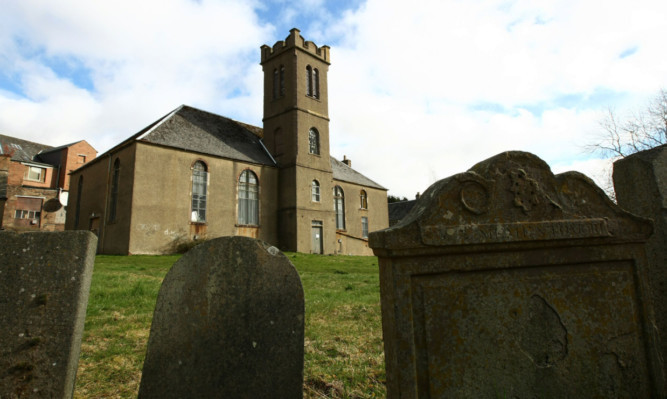Controversial suggestions that a historic graveyard in Crieff could be made into a car park have sparked an angry response.
The churchyard at St Michael’s Old Parish Church still features gravestones which were resited a number of years ago but the ground has become an excrement-strewn eyesore, prompting calls for a more useful future.
Crieff and Upper Strathearn Partnership (Cusp) which is made up of various local organisations has prepared a report that confirms the church and grounds are in a very poor state.
“The local community has been aware of the perilous state of the building for many years and despite its availability for use, its general state and likely cost of maintenance and repair has deterred any community group from assuming responsibility for the building,” said John Champion, author of the report.
“The building has now passed to ‘the Crown’ effectively leaving it in the control of the local authority, Perth and Kinross Council.
“The churchyard is heavily littered with dog excrement. Loose masonry hidden in the undergrowth also presents a trip hazard in some areas. The building itself has been subjected to damage by way of windows being smashed and graffiti being applied.
“The land could be put to any number of uses. One, obvious option could be to provide much-needed additional car parking in the very centre of the town. Another could be to provide the town centre with its own dedicated bus exchange.
“In any event an appropriate and useful function could be found for what must be a fairly valuable site in the town centre.
“This can no doubt be determined by the local authority, in consultation with the community.”
Craig Finlay of Crieff Community Council which is a member of Cusp said he was far from convinced a car park would be an appropriate use for the churchyard and likened it to the highly controversial crematorium road plans in Perth, which include an area where human ashes have been scattered.
“Crieff and Upper Strathearn Partnership have, quite rightly, highlighted an urgent need for action in securing the future of St Michael’s Old Parish Church site,” Mr Finlay said.
“It is worrying that the historic importance of this site, as well as the moral implications of disturbing the graves of more than 1,000 bodies, could be overlooked in favour of infrastructure.
“It is my hope that a proper consultation period can be followed by a compromise that can suit the interests of everyone.”
St Michael’s former Parish Church, which is on Church Street, was completed in 1827 but only served as a church for 50 years before another was built in a different part of town.
The area has been used as a church site since 1199, however, giving rise to speculation that there might be as many as 1,000 graves in the area.
Mr Finlay said that the building is in a poor state, having been broken into, with windows smashed and evidence of drug-taking lying around.
In the short term, he said he is hopeful the situation would be improved with the help of police who have managed to secure the services of Perth and Kinross Unpaid Work Team to tidy up the site and make the building secure, once funding is in place.
